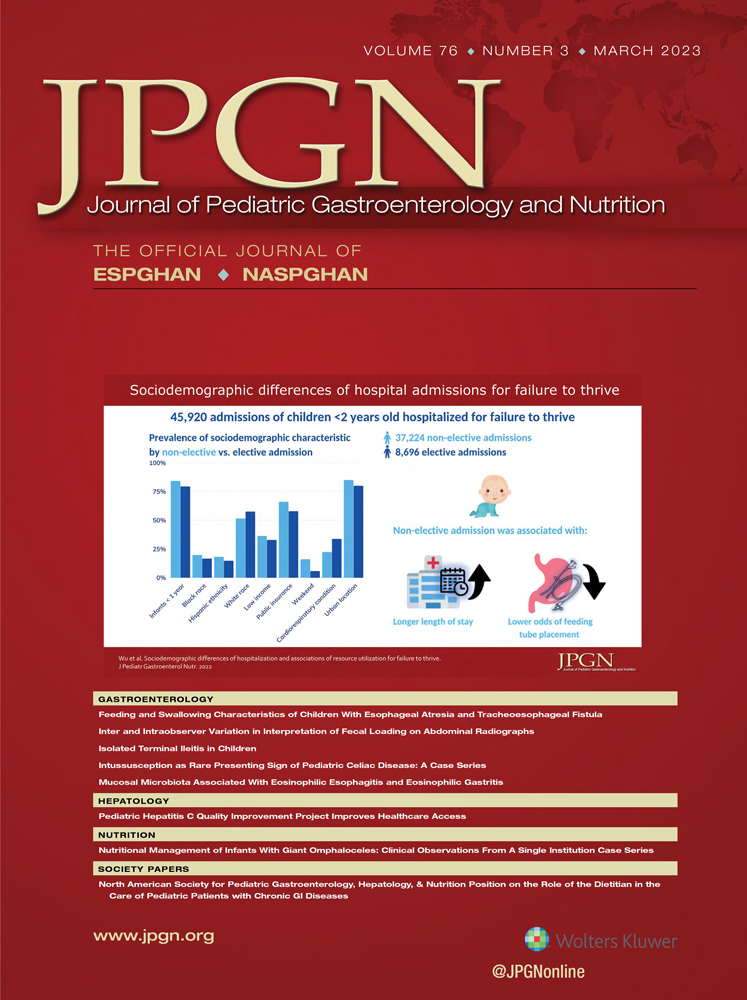Prevalence and Etiologies of Renal and Urinary Manifestations in a Large Cohort of Children With Inflammatory Bowel Disease
The authors report no conflicts of interest.
Supplemental digital content is available for this article. Direct URL citations appear in the printed text, and links to the digital files are provided in the HTML text of this article on the journal’s Web site (www.jpgn.org).
Abstract
Background and objectives:
Renal and/or urinary manifestations (RUM) have been reported in pediatric patients with inflammatory bowel disease (IBD) but their incidence is unknown. The aims of this study were to assess the prevalence and causes of these manifestations in children with IBD and determine the causal link with 5-aminosalicylic acid (5-ASA) treatment.
Methods:
A retrospective observational study was performed with children with diagnosis of IBD. All children with RUM during follow-up and/or impaired renal function [estimated glomerular filtration rate (eGFR) < 90 mL/min/1.73 m2] were identified.
Results:
Of 228 included patients, 9 (3.9%) had a RUM during follow-up [follow-up: 5 years (1–12 years)] at a median age of 16 years (8–17 years). It concerned 7 of 171 patients with Crohn disease and 2 of 57 with ulcerative colitis. Seven patients were taking 5-ASA at the time of the RUM. Only 1 of them had an iatrogenic renal complication related to this treatment. Patients with RUM had a more severe disease with increased anti-tumor necrosis factor-α use (P = 0.031), more abscesses (P = 0.003), and a higher rate of digestive surgery (P = 0.04). For the whole cohort, a significant decrease in eGFR was found during follow-up (121 vs 107 mL/min/1.73 m2, P < 0.001). At the end of follow-up, 38 of 202 (19%) patients had an eGFR < 90 mL/min/1.73 m2.
Conclusion:
In children with IBD, RUM can occur, independently of treatment with 5-ASA. During follow-up, a significant decrease in eGFR was observed. We suggest monitoring renal function in all patients with IBD.




